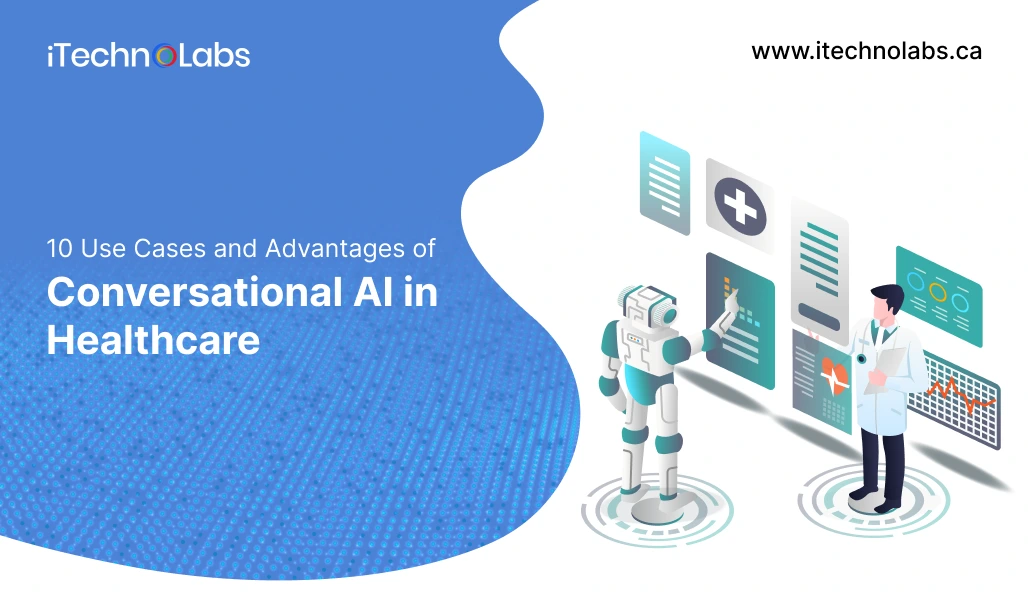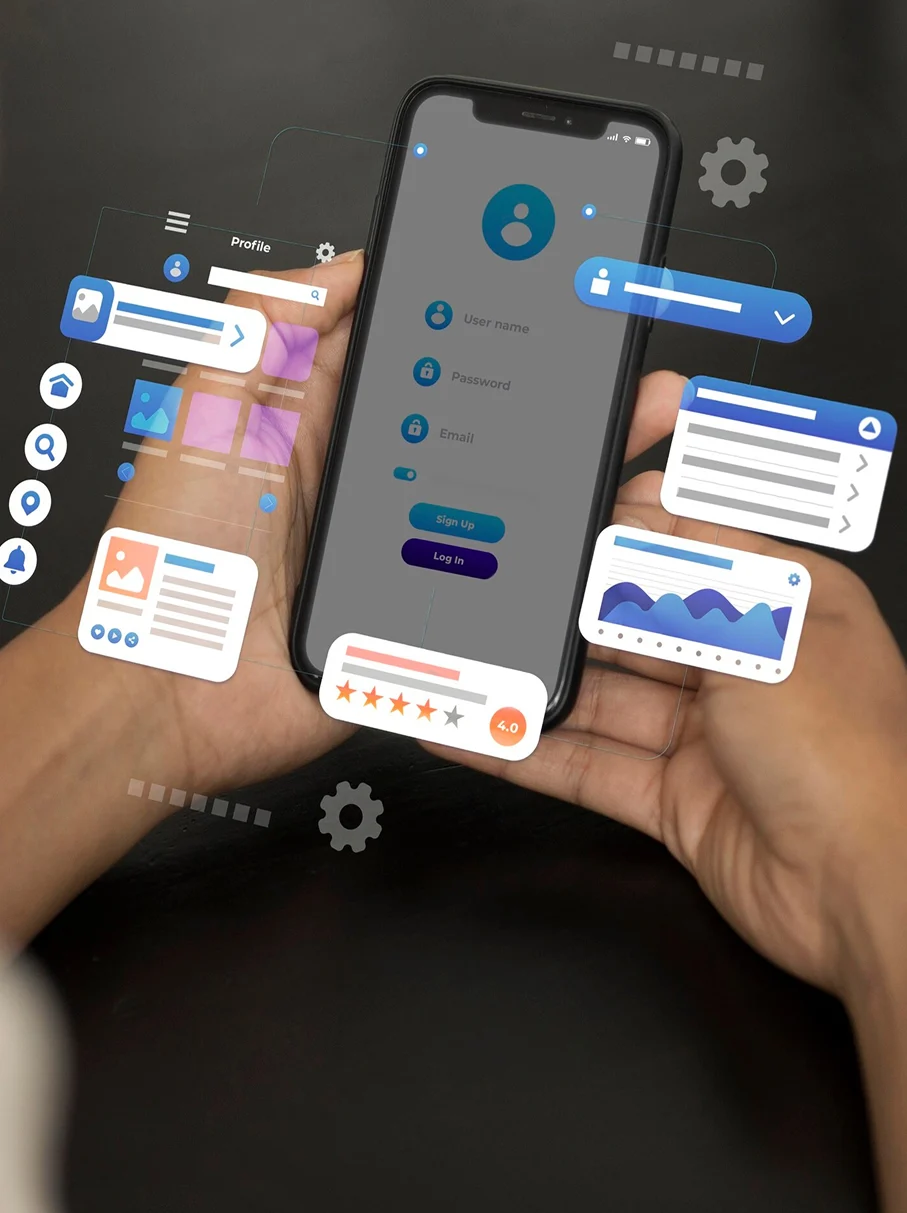The world has changed a lot. Every industry is evolving with the changing technologies. The healthcare industry is no exception. Patients today expect quicker response time, and there are so many patients that a doctor alone can’t handle. Moreover, if they hire extra staff, then the cost will rise too much, which no hospital wants. So what’s the solution? Well, it’s ai.
And not just a simple AI chatbot, but a conversation AI tool that is far different and advanced than traditional chatbots. It understands the patient’s condition and personalizes answers every time. Today, healthcare leaders are investing in AI to create chatbots, assistants, and other models to speed up their work. Read this blog to learn about conversational AI in healthcare, its benefits, use cases, challenges, and more.
Why does the Healthcare Industry need AI?
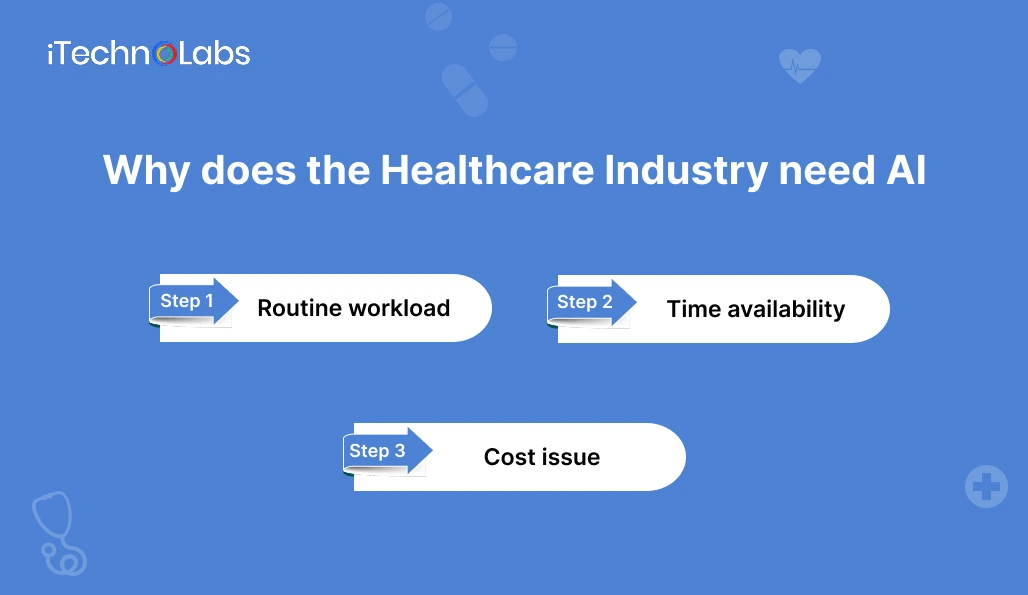
Conversational AI means the use of intelligent systems. These systems can be chatbots, generative agents, and even voice assistants. They can easily understand the language of staff, patients, and healthcare professionals.
The sudden need for conversational AI can be understood through the following pointers:
- Routine workload: Healthcare professionals dealt with a lot of administrative work daily. They have to prepare patient reports and upload them to the online system. This can be done in seconds by using conversational AI tools.
- Time availability: Another reason why conversational AI in healthcare is required is that doctors cannot be available every time for the patient. On the other hand, AI tools can provide them 24*7 assistance for their queries.
- Cost issue: Healthcare professionals come at a high cost, while conversational AI is affordable. It can do the work of 10 people alone with 1/5th of their salaries combined.
Here is a short table to quickly understand the difference between a traditional chatbot vs. a conversational AI chatbot:
| Criteria | Regular chatbots | Conversational AI chatbot |
| Understanding of language | Triggers specific keywords only | Contextual NLU |
| Personalization | No | Adjusts according to tone, expression every time |
| Clinical safety | Limited replies | Escalates to human |
| integration | Remains separate from the system | Connects through API |
| value | Answers simple queries | Available for 24*7 support |
10 Use Cases of Conversational AI in Healthcare
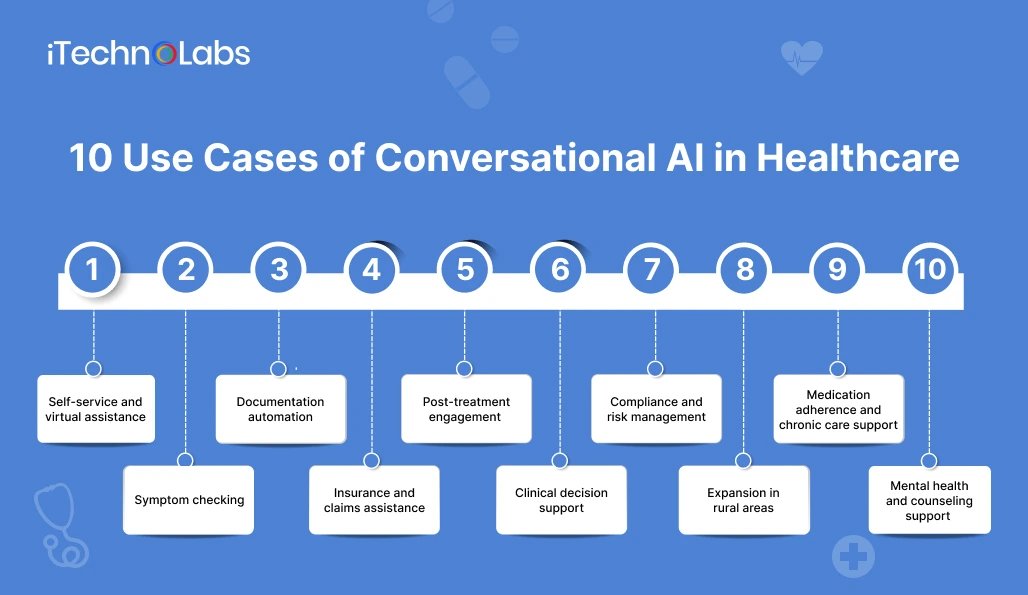
Conversational AI is changing how many healthcare organizations in the world work. The following are some of the most common ways AI is used in healthcare:
1. Self-service and virtual assistance
In today’s time, patients don’t have to fill out any forms or stand in queues. They can simply pick up their phone and talk to a conversational AI. They can ask any questions regarding their medical problems. Also, they can book an appointment online.
Real-world Example – Intermountain Health & Hyro
A company named Intermountain Health is using Hyro, which answers patient questions. Also, it lets patients schedule an appointment and guides them to the right department. It is available on mobile, voice channels, as well as on apps.
2. Symptom checking
After detecting symptoms, AI tells the patient what to do. It guides them properly to cure medical problems. This prevents patients from unnecessary ER trips.
Real-world Example – Mayo Clinic AI-powered nurse virtual assistant
Mayo Clinic launched an AI-powered assistant that integrates with the electronic health record. It provides patient summaries to nurses in real time. The AI tool supports more than 9600 nurses across emergency care. It reduces admin work and allows them to focus on treating patients.
3. Documentation automation
Doctors used to spend lots of time typing notes every day. Now, smart AI tools help by listening to patient visits and writing down what is said. This gives doctors more time to talk with their patients instead of just looking at a computer.
Real-world Example – Microsoft Nuance Dragon Ambient eXperience
A real-life tool called Microsoft Nuance Dragon Ambient eXperience (DAX) helps turn talks with patients into notes for the doctor. At one hospital, doctors saved about seven minutes per patient, and some even gained two extra hours each day. Doctors can also check and change every note before it is finished, which makes them feel safe and helps avoid mistakes.
4. Insurance and claims assistance
Insurance is one of the biggest problems for any healthcare provider. Conversational AI makes the process simple. This tool provides clear answers to patients and lets hospitals easily go ahead with paperwork.
Real-world Example – Helvetia Insurance
Helvetia has built a Facebook bot that collects the details and processes the claim. People can easily upload their pics and tell the issue. Also, they can track their progress without any hurdles.
5. Post-treatment engagement
Everyone wants to step out of the hospital as soon as possible, but follow-ups can be tricky. Here comes conversational AI, which provides timely reminders to patients. It keeps the patients in check and ensures they complete their medical course.
Real-world Example – Northwell Health & Conversa Health
Northwell Health has launched an AI solution that is driven by Conversa. It helps the hospitals to stay connected with patients after they leave. It has a customer satisfaction rate of 97% and fewer avoidable readmissions.
6. Clinical decision support
Doctors have to look at lots of information when they make important choices. AI that talks with them helps by showing only the most important facts about patients and answering questions quickly. This helps doctors make good decisions faster and feel sure about what they pick.
Real-world Example – Mayo Clinic Platform
They use special tools that let doctors ask questions in plain English and get helpful, easy-to-understand answers. These tools can listen to doctor-patient talks, change everyday words into medical terms, and sum up what matters most. AI doesn’t make choices for doctors, but it shows the facts they need in their normal work programs. This easy system and trustworthy info make doctors more confident and help them decide things faster.
7. Compliance and risk management
Hospitals only run on one thing: trust. This can easily get broken if the records are not complete or if you miss any compliance. Conversational AI in healthcare finds these issues early by scanning data. It detects any gaps and makes the data ready for audit.
Real-world Example – Agentic AI under HIPAA governance
A new report has suggested using agentic AI to comply with HIPAA regulations. This makes sure that all actions taken by AI are ready for audit.
8. Expansion in rural areas
Many people don’t get access to doctors since they live too far from hospitals. With conversational AI in healthcare, geography is not an issue at all. It provides language support and can detect symptoms even if the person is a thousand miles away.
Real-world Example – Ada Health & Sutter Health
Sutter Health has partnered with Ada Health. With this, Ada’s AI assessment tool is implemented in Sutter’s systems. To date, over 410,000 assessments have been taken by patients on the tool.
9. Medication adherence and chronic care support
Recovering from a medical condition is tiring both mentally as well as physically. Here comes AI-powered assistants. These help to keep you on track. It provides enough mental support to patients.
Real-world Example – Mount Sinai Health & HealthSnap
The medical center of Mount Sinai has partnered with HealthSnap to launch an AI-driven tool. It is made for patients with diabetes, COPD, heart failure, and hypertension. It helps teams find any warning signs earlier and let the team correct them then and there.
10. Mental health and counseling support
Talking about mental health is still not easy for people; they hesitate to talk about it. But conversational AI in healthcare listens to the problems of patients without judgment. It also provides them with the guidance they need.
Real-world Example – Woebot Health
Woebot Health provides chat support through an AI platform. It is used to provide supplemental theory, and it flags any risk. In some studies, Woebot has seen significant improvement in symptoms within two weeks. Its retention rate was also more than other apps.
Also, read: How AI-powered digital transformation is Revolutionizing Businesses
Benefits of Conversational AI in Healthcare
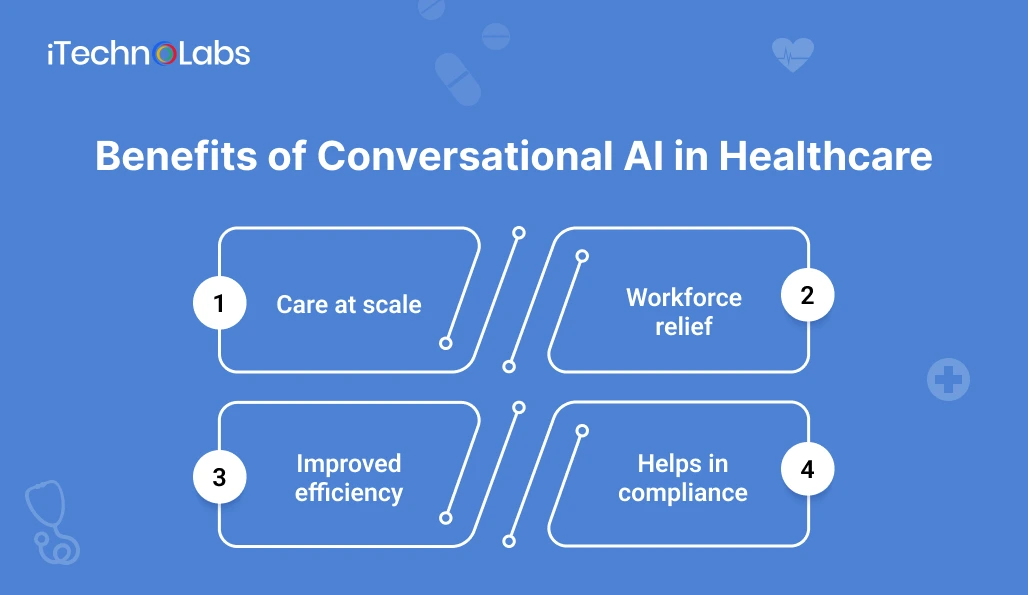
What we just saw were the real-world applications of AI in healthcare; however, there is more important than this to look upon: its benefits. Below you can see multiple benefits of using conversational AI in healthcare:
1. Care at scale
While humans have a certain time limit to treat patients, conversational AI doesn’t face that. It is available 24*7 to answer patients’ queries. This allows hospitals to treat a large number of patients at once, which wasn’t possible earlier.
2. Workforce relief
Human healthcare professionals get tired after filling out so many forms. Conversational AI in the healthcare sector makes humans free to do other tasks by taking much of their workload. This results in more face-to-face time for patients and less stress for human staff.
3. Improved efficiency
AI in healthcare is not just helpful for one department but all of them. Whether it is maintaining patient records, scheduling appointments, or processing insurance, it helps in every task. This means the employees are free to focus on high-priority tasks.
4. Helps in compliance
Healthcare is one of the most regulated sectors globally. The adherence to the regulations is a non-negotiable for any hospital. Conversational AI helps in creating standardized records and making documentation. This ensures that the information of patients is safe.
How to Implement AI in your existing system?
Till now, we have seen the use cases of conversational AI in the healthcare industry and its benefits. Now let’s see how to implement AI in your current system:
1. API connectivity
- EHR APIs: Direct connections allow conversational AI to update the documents. Also, it helps to sync visit notes.
- Scheduling APIs: AI assistants can check calendars and schedule appointments. Moreover, they can send confirmations and manage follow-ups on their own.
- Imaging APIs: Many AI tools can even read image results, which saves the time of patients as they get quick answers.
2. Security & compliance
- HIPAA and gdpr compliance: These privacy laws help hospitals to protect patients’ data through different methods. Those methods are encryption, consent workflows, and access control.
- End-to-end encryption: All data, including patient records and symptoms, remains completely encrypted to safeguard patients’ data and maintain trust.
- Audit & monitoring: Systems track everything to find out if anything is fishy.
Challenges to Implement AI in Healthcare
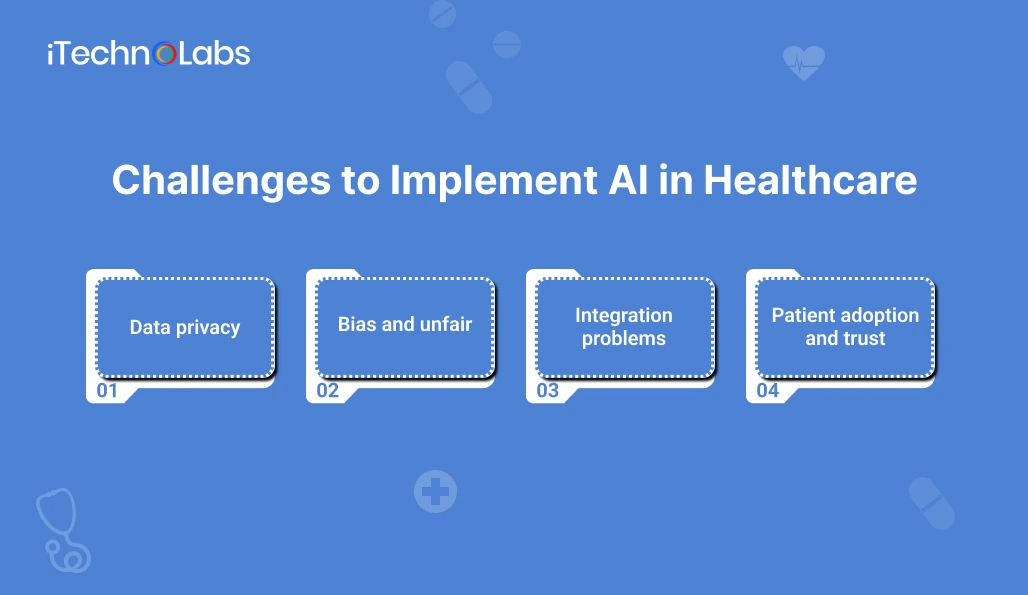
Conversational AI in healthcare brings its own challenges along with the benefits and use cases. It is only after resolving these issues that hospitals can unleash the full potential of AI tools. The following are some of the biggest challenges with AI implementation in healthcare:
1. Data privacy
The AI tools completely rely on the data. If the data is inaccurate and outdated, AI’s output will be irrelevant. AI tools handle sensitive data of patients, which, if leaked, can result in loss of trust. So, it’s essential to comply with certain regulations, such as GDPR, HIPAA, to secure data.
Solution – Many hospitals have already started using this to safeguard their patients’ data. They have tightened their access rules and are implementing end-to-end encryption. Some even use private servers so that they have full control over where the data goes. They tell their patients where the data goes, how they use it, which shows transparency and builds trust.
2. Bias and unfair
AI only learns from data. If the data is wrong, the result will be biased only. This means AI can give advice that might not suit everyone. This is a danger in medicines.
Solution – To tackle this problem, hospitals are building systems where humans will be kept in the loop. The human clinicians will approve the AI output. Teams run a bias test before using it throughout the organization. This is important to make sure that AI doesn’t exhibit partiality based on age, gender, or background.
3. Integration problems
Conversational AI in medicine is only useful if it can be used with the least hassle. Before implementing AI, make sure that it is compatible with your existing systems.
Solution – Hospitals are collaborating closely with AI vendors and IT departments to ensure system compatibility. They conduct pilot programs to test interoperability before large-scale implementation. Using APIs and middleware solutions, AI tools can be smoothly connected with legacy systems. Continuous staff training is also vital to ensure that everyone understands how to use these tools efficiently without disrupting operations.
4. Patient adoption and trust
Even the most advanced AI solutions are ineffective if patients and healthcare staff don’t trust them. Many fear that AI might replace human doctors or mishandle personal health data, leading to reluctance in adoption.
Solution – Hospitals are focusing on education and transparency. Staff are trained to use AI as a supportive tool that enhances—not replaces—their expertise. Patients are informed that AI is designed to assist doctors by improving accuracy, response times, and patient experience. Clear communication, successful case studies, and real-time demonstrations help patients and staff see AI as a trusted healthcare partner, ultimately increasing adoption rates.
Future of AI in Healthcare
Don’t think that in the future, too, the chatbots will just answer the queries. Something big is coming up. Beyond answering simple medical questions, conversational AI will manage complete patient journeys. The next generation of AI assistants will be able to think and act like humans.
Rather than just telling you about your scheduled appointment time, it will help with much more. It will read a patient’s history and tell the next step to cure the disease. Right now, conversational AI works as a clerk, but in the future, it will become a real partner in the patient’s journey.
In the near future, AI will be able to do all the routine tasks. This includes billing, documentation, and scheduling appointments. However, as the governance will get stronger, AI will do more clinical tasks such as checking symptoms to curing diseases.
One area that is already taking shape is voice-based AI. It helps patients to have a conversation with an AI tool and get answers to their queries. That’s actually better than typing as you are talking with an AI assistant.
Suggested article: AI Chatbot in Healthcare: Transforming Patient Care with Medical AI Chatbots
Conclusion
AI is one of the most advanced technologies in the 21st century. What’s more advanced is the conversational AI. A tool that can talk with the patients and helps hospitals automate their tasks, saving time to treat patients. The benefits of using conversational AI in healthcare are immense, such as better patient treatment, workforce relief, improved efficiency, better compliance and accuracy, and many more. Along with the benefits come various challenges that need to be solved when implementing AI in healthcare.
FAQs
1. What is conversational AI in healthcare?
Conversational AI in healthcare is a technology that helps automate the routine tasks of doctors and makes them free to do more important tasks. This not only saves cost but also helps to improve productivity and efficiency.
2. What is the definition of conversational AI?
Conversational AI is an AI tool that can talk with people, and they can ask their questions. It is 24*7 available tools to people free of cost. It saves people time as well as helps to enhance productivity and efficiency.

